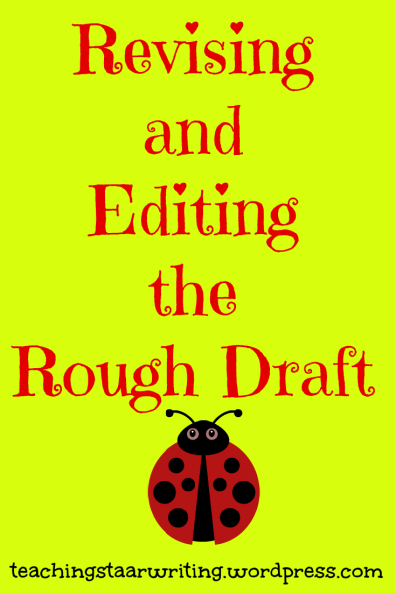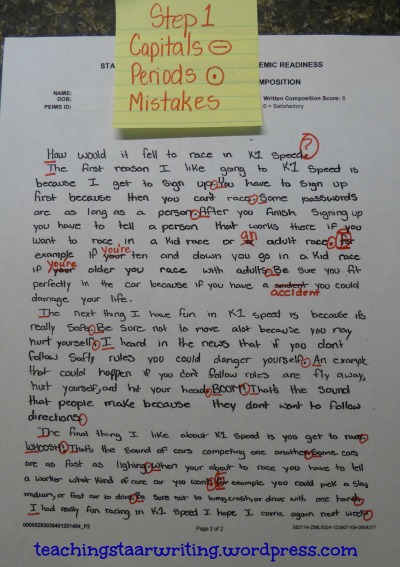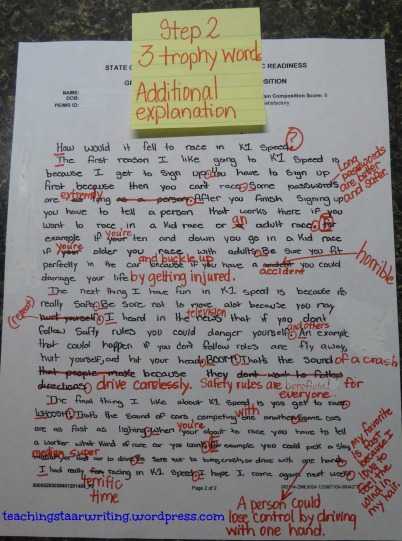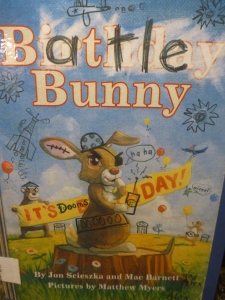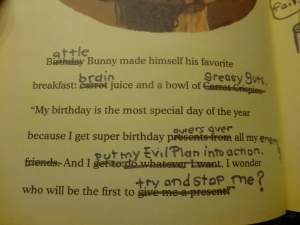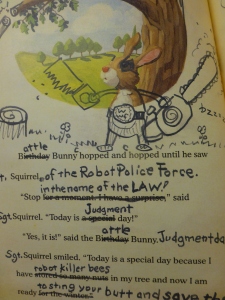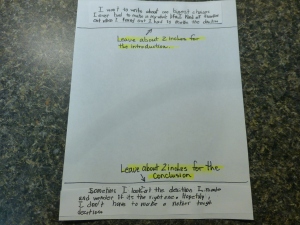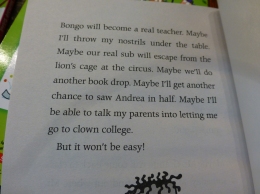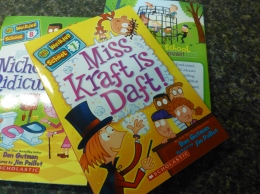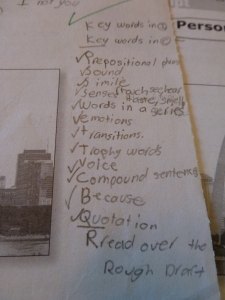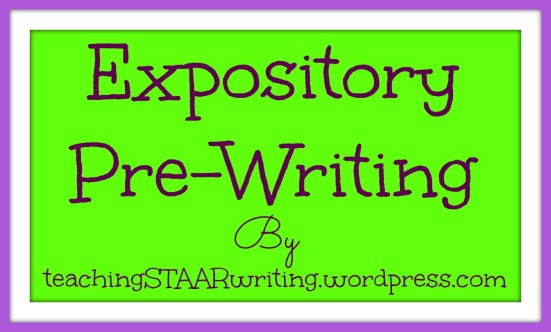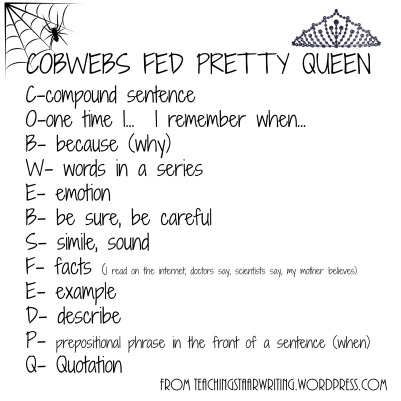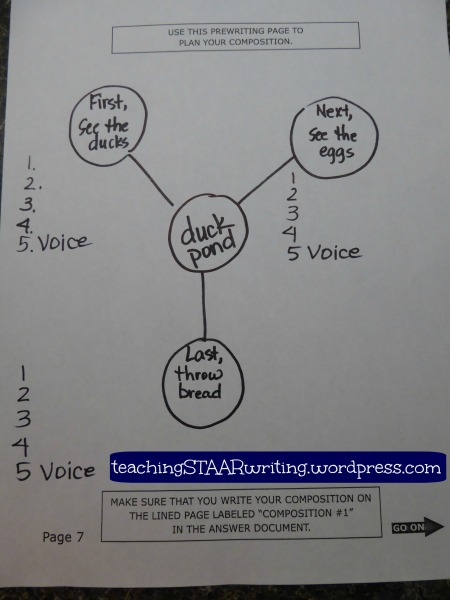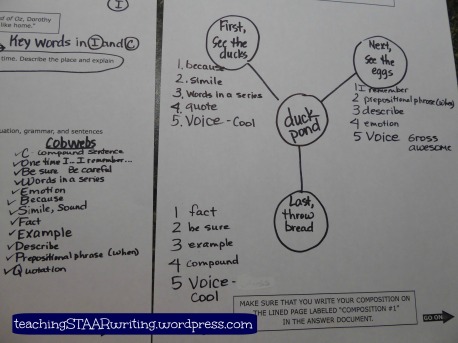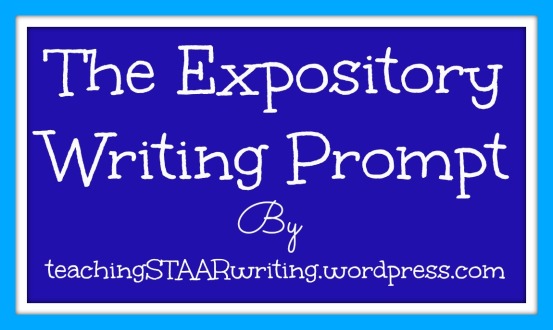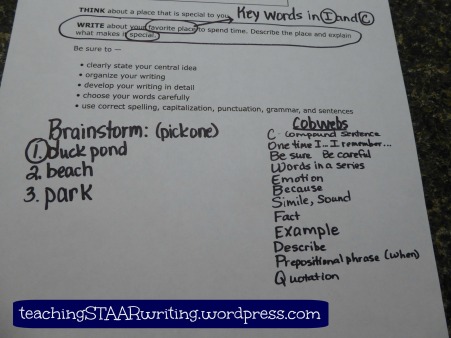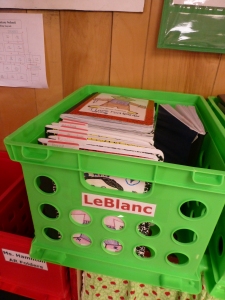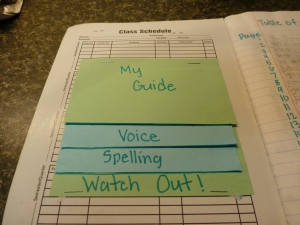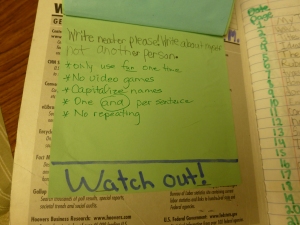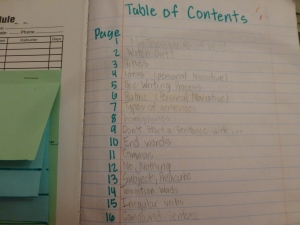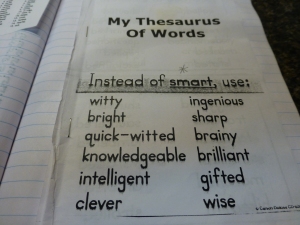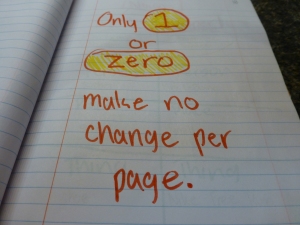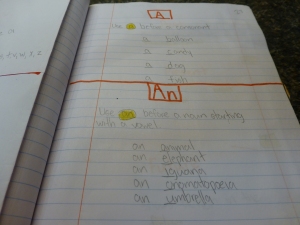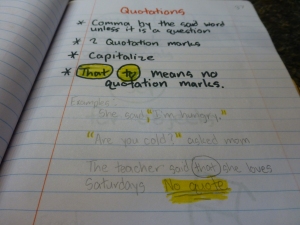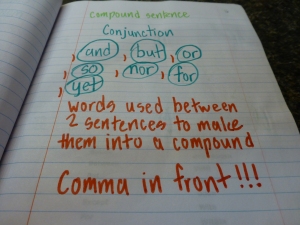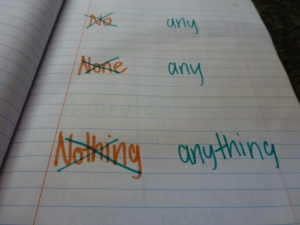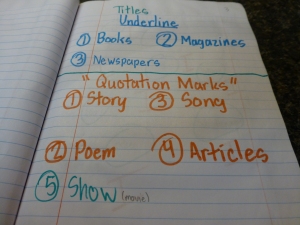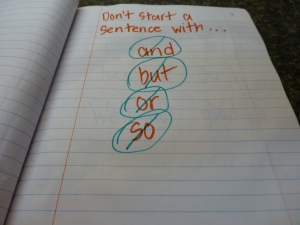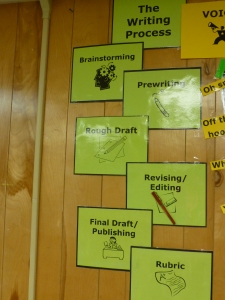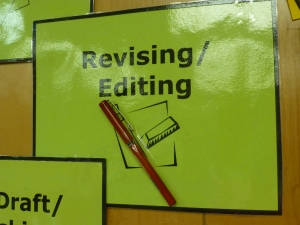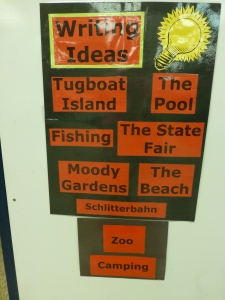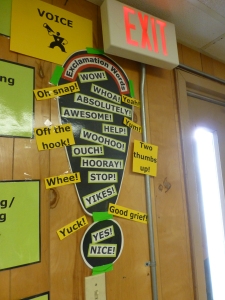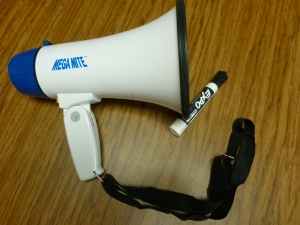WATCH OUT!
The WATCH OUT! phrase is used with my students to indicate trouble. As I read their papers I write WATCH OUT when I see a place that needs to be edited/revised. There is a special place in each student’s journal to place an individual WATCH OUT problem. (I will focus a future post on journals.) This list is based on years of watching “at risk” children and their writing trends. Perhaps you would not need to be so stringent with a gifted writer.
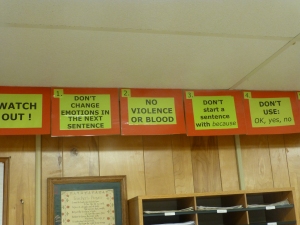
1. DON’T CHANGE EMOTIONS IN THE NEXT SENTENCE Writers that want to fill up space try all kinds of tricks. I tell my students that I would LOVE for them to start off with an emotion like worried, and then at the end of the composition change emotions to proud or relieved. This type of discussion is perfect for reading comprehension where the character often changes from the beginning of the story to the end, but NEVER in the next sentence. There needs to be lots of explanation between emotions.
2. NO VIOLENCE OR BLOOD Boys especially may want to write about video games, or interactions with friends. This rule also keeps fiction from creeping into a personal narrative.
3. DON’T START A SENTENCE WITH BECAUSE. I don’t know why my students want to capitalize the word because and put a period in front of it, when it is clearly in the middle of a sentence. This mistake happens frequently.
4. DON’T USE “OK”, “YES”, “NO” which would indicate boring dialog with another character in the composition.
5. NO BACK AND FORTH CONVERSTIONS (forgot to take a picture of it) This goes with rule 4 and 14. This is a trick to take up space in the composition instead of answering the prompt. Most of the time these conversations are boring and off topic. I allow my “at risk” students one quotation per paragraph, and only if it is interesting and only if they use proper punctuation, and only if they are the one making the comment. This is on a case by case basis. I would rather their quotation be a reflection. For example: I said to myself, “You are one smart cookie!”
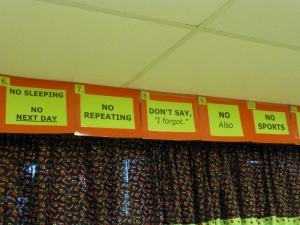
6. NO SLEEPING, NO NEXT DAY Another trick students will use to try and fill up space.
7. NO REPEATING This goes hand in hand with combining sentences, perfect for revising and editing on the multiple choice section of the STAAR. Example: My dog is so funny. My dog is my best friend. Combined it would read: My dog is funny and is my best friend.
8. DON’T SAY ,”I FORGOT” see below
9. DONT SAY, “ALSO” Both number 8 and 9 are to prevent the writer from tagging onto the end of their story two or three sentences just to make the composition longer. It would be best to use the red pen during revising and editing and place the sentences where they would go when the final draft is made.
10. NO SPORTS see below
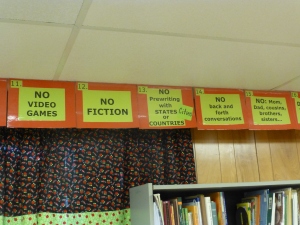
11. NO VIDEO GAMES Typically “at risk” students who write about sports or video games as a personal narrative are unsuccessful because they turn the composition into a list. If the prompt says to write about a favorite sport or game then I teach them to write about one moment in the game, not try to explain how to play the entire sport.
12. NO FICTION I really drive home the point that whatever a student writes about must be believable or have been experienced personally.
13. NO PREWRITING WITH COUNTRIES, STATES, OR CITIES Often my students will want to put Mexico or Galveston as their response to the personal narrative prompt. This is way too broad, and normally the student’s composition will resemble a list. I tell them to pick one place they went in these locations. Then pinpoint a moment in time, like a snapshot from a camera, to write about. I will discuss prewriting in a later post.
14. NO MOM, DAD, BROTHER, SISTER, COUSINS This WATCH OUT rule is one of the most important on the list. Typically my “at risk” students do not have many experiences other than family. If not reined in, a student’s composition would be filled with boring conversation, and exploits of family members. I allow them to mention a family member ONCE, but then the rest should be written in first person about self.
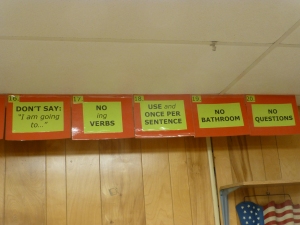
16. DONT SAY, “I AM GOING TO…” see below
17. NO ING VERBS Both 16 and 17 are to help the student write the composition in past tense. ESL students especially have a problem with past tense. As they acquire the English language this gets easier, but it helps to have a rule in place. Sometime this helps them when revising and editing.
18. USE AND ONCE PER SENTENCE This goes with rule number 7. New writers love to fill the composition with one continuous sentence linked together with and.
19. NO BATHROOM No references to anything in the bathroom, bathroom words, or bodily functions masquerading as voice. Once again, this is a trick to fill up space.
20. NO QUESTIONS It is okay to use a question in the introductions, but questions are frequently used by students when talking to a family member. (see rule 5 and 14) This is another trick a student will use to fill up the page.
Now here is the fun…I let my students have one last HURRAH after teaching these WATCH OUT rules. I let them write a composition with all the above…a one time occurrence…to get it out of their system. They have such a good time and produce such funny stories. This proves to me that they understand what I expect in their writing. I let them share the stories in their groups and then these wacky compositions mysteriously “disappear.” (I am not sure the parents would understand stories about blood and bathrooms. hahahaha)
So what can you do to help your student fill up a paper with quality sentences? Check back soon for a post on the writing process checklist that I have created with all the ingredients to make a great composition.
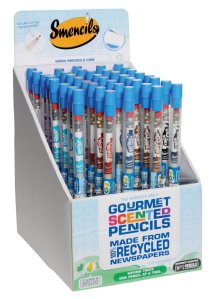 A word of caution is to be given about time management. Typically, the multiple choice section of the STAAR should take about 30 minutes to complete each day. That leaves 210 minutes left to compete the entire writing process, plenty of time. But some students are especially slow and may not be able to finish on time, so I train them to be aware of the time. Once I call the time at 30 minutes left they need to stop working on the rough draft and write the final draft. Once I call 10 minutes left, they need to stop writing the final draft and write the conclusion. I am convinced that a paper without a conclusion will not score well. (my opinion)
A word of caution is to be given about time management. Typically, the multiple choice section of the STAAR should take about 30 minutes to complete each day. That leaves 210 minutes left to compete the entire writing process, plenty of time. But some students are especially slow and may not be able to finish on time, so I train them to be aware of the time. Once I call the time at 30 minutes left they need to stop working on the rough draft and write the final draft. Once I call 10 minutes left, they need to stop writing the final draft and write the conclusion. I am convinced that a paper without a conclusion will not score well. (my opinion)
